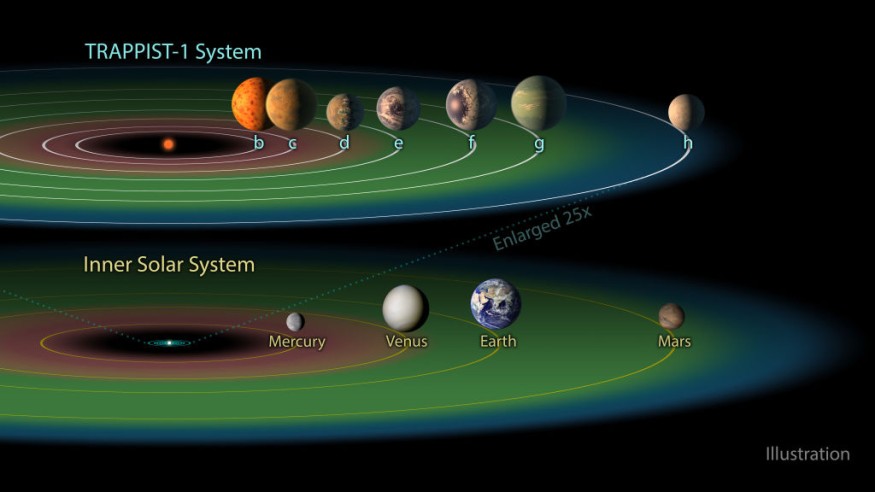In the vastness of space, Earth looks to be an oasis. Neighboring planets aren't exactly welcoming. Even though we're getting closer to putting humans on Mars, life on the red planet would be challenging. Earth is the perfect place for humans to live: it's neither too hot nor too cold, but just right-like Goldilocks' zone.
This isn't a random occurrence. People can live on this planet because we have evolved to live here. However, not every planet falls into this 'Goldilocks' zone for life as we know it, and those that do aren't certain to be similar to Earth.

Goldilocks Zone Explained
NASA said the habitable zone is the region of space around a star where temperatures are just right for liquid water to exist on the surface of nearby planets.
Consider what might happen if Earth were to land on Pluto's surface. Earth's ocean and much of its atmosphere would freeze, and the Sun would be scarcely visible (about the size of a pea). On the other hand, Earth would be too close to the Sun if it took Mercury's place, and its water would produce a steam atmosphere that would swiftly boil away.
The distance between Earth and the Sun is ideal for water to stay liquid. The habitable zone, often known as the Goldilocks zone, is the distance between the Earth and the Sun.
The Goldilocks zone, according to astronomers, is located between 0.95 and 1.67 AU (an AU is an Astronomical Unit, which is the average distance between the Earth and the Sun). But Futurism said the Goldilocks Zone presently occurs between 0.99 and 1.7 AU, putting Earth on habitability.
National Geographic, citing researchers, said as many as 16 of the 1,780 verified planets outside of our solar system are in their star's habitable zone, where temperatures are neither too hot nor too cold to host life. It's also important to consider size — a planet with an atmosphere that is too tiny will lose it and too vast atmosphere will have it crushing.
What About Temperature?
Just because a planet or moon is in a star's Goldilocks Zone doesn't indicate it will contain life or liquid water.
After all, Earth isn't the only planet in the Sun's Goldilocks Zone; Venus and Mars are also in this habitable zone but aren't livable at the moment.
According to ABC News, Venus is Earth's sister planet; both are roughly the same size and are in the same solar system area, and Venus formerly had water.
On the other hand, Venus is experiencing a runaway greenhouse effect, with a surface temperature of over 460 degrees Celsius, which has cooked away all of the planet's liquid water.
Mars, which formerly had liquid water flowing over its surface in rivers, lakes, and seas, sits at the other extreme of the Sun's Goldilocks Zone.
On the other hand, the Red Planet is now a freeze-dried desert with a thin carbon dioxide atmosphere and atmospheric pressure one-ninth of sea level on Earth.
Because the Martian surface lacks both a significant atmosphere and a worldwide magnetic field due to its essentially frozen core, it is continually bombarded by the Sun.
Any remaining water on Mars that hasn't degassed into space, been carried away by the solar wind, or been irradiated into hydroxyls on the surface, is frozen in the planet's ice caps and permafrost, or swiftly subducts from ice to gas during the local Martian summer.
While some evidence suggests that there may be underground saltwater brines that can leak to the surface, scientists have yet to discover any life on Mars.
RELATED ARTICLE : Life Other Than Earth's Might Be Closer
Check out more news and information on Space in Science Times.











